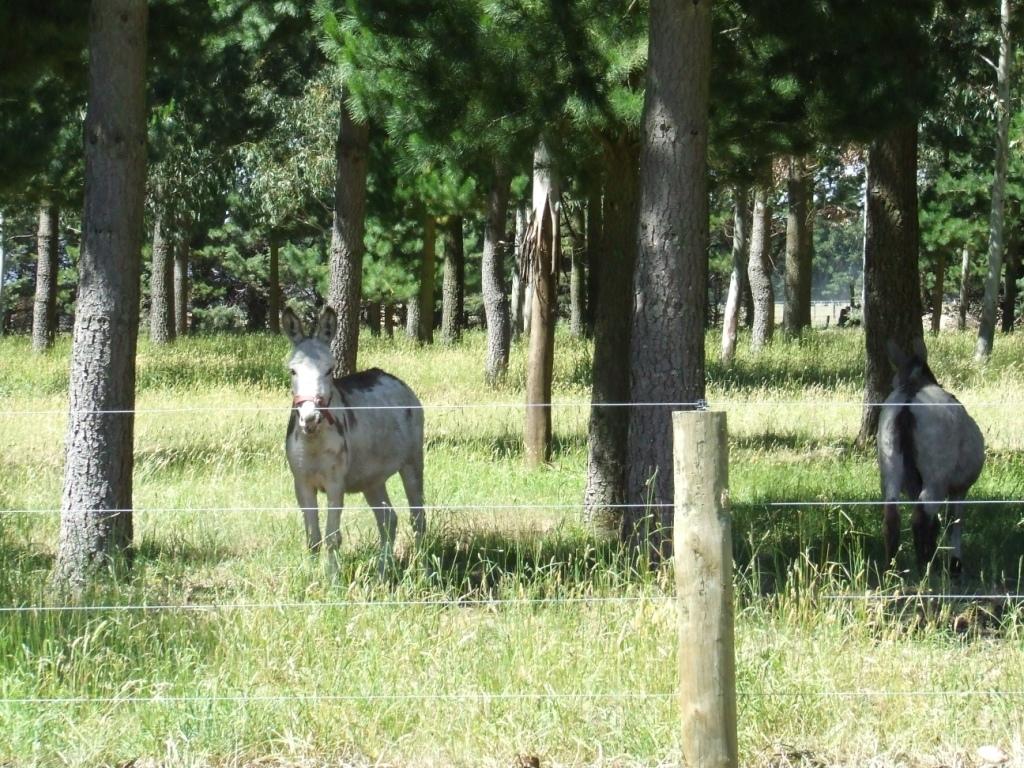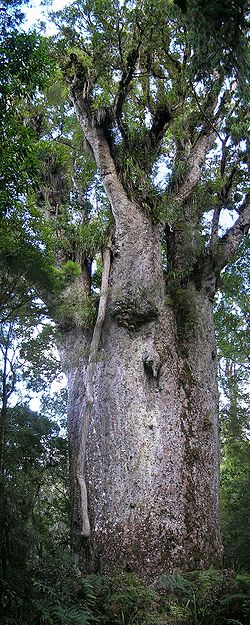Pumula property
 A haven for donkeys, the Pumula farmstay is tucked in, and surrounded by Gum and Pine trees. A haven for donkeys, the Pumula farmstay is tucked in, and surrounded by Gum and Pine trees.
There are 3 main paddocks, through which the donkeys meander, using the bark as back scratchers.
Here they are wating for their dinner . . . and will protest loudly if it doesn't arrive on time.
New Zealand - Flora and Fauna
Because of its long isolation from the rest of the world, and the island biogeography New Zealand has extraordinary flora and fauna. About 80 percent of the New Zealand flora only occurs in New Zealand, including more than 40 endemic genera.
 New Zealand is one of the worlds richest bio-diverse areas on earth for flora. It is home to a large variety of beautiful plants of which 84% are endemic. The forests range from sub tropical to temperate, evergreen rainforest, and beech forests. Native trees include Rimu, Totara, Matai, Kahikatea and many species of ferns including some giant tree ferns. Other notable trees include, the Cabbage Tree, the Nikau Palm which is New Zealand's only palm tree, and the Giant Kauri, which hold the record for the greatest timber volume of any tree on earth. New Zealand is one of the worlds richest bio-diverse areas on earth for flora. It is home to a large variety of beautiful plants of which 84% are endemic. The forests range from sub tropical to temperate, evergreen rainforest, and beech forests. Native trees include Rimu, Totara, Matai, Kahikatea and many species of ferns including some giant tree ferns. Other notable trees include, the Cabbage Tree, the Nikau Palm which is New Zealand's only palm tree, and the Giant Kauri, which hold the record for the greatest timber volume of any tree on earth.
Flowering trees include the Kowhai, which has a beautiful yellow flower, plus the Rata and Pohutukawa tree's which both flower each summer with different shades of red.
New Zealand also contains large areas of tussock grass in sub-alpine areas. Prominent areas of tussock include the South Islands McKenzie Country and the Central Plateau of the North Island.
Some areas of New Zealand contain introduced species such as California's Pinus Radiata and the Canadian Douglas Fur. Both these trees are New Zealand's primary crop for forestry and they take about 30 years to fully grow, compared to 90 years in the Northern Hemisphere. This is attributed to New Zealand's lush volcanic soil and year round rainfall.
A sole survivor of an ancient order
 The Kiwi bird, occurs only in New Zealand. Although primarily a bird of New Zealand’s native forests, kiwis also live in scrub and native grasslands. Because the kiwi is a semi-nocturnal, secretive bird, few New Zealanders have seen their national bird in the wild. The Kiwi bird, occurs only in New Zealand. Although primarily a bird of New Zealand’s native forests, kiwis also live in scrub and native grasslands. Because the kiwi is a semi-nocturnal, secretive bird, few New Zealanders have seen their national bird in the wild.
Kiwis grow to about the size of a chicken and weigh between three and nine pounds. They have no tail and tiny two inch wings which for all practical purposes, are useless. Despite its awkward appearance, a kiwi can actually outrun a human and have managed to survive because of their alertness and their sharp, three-toed feet, which enable them to kick and slash an enemy.
The kiwi’s long slender bill has nostrils at the lower end. Using its excellent sense of smell and flexible bill, the kiwi feeds on worms, insects and grubs, supplemented by leaves, berries and seeds. There are five kinds of kiwi in New Zealand - three closely related... Brown Kiwis, the Little Spotted Kiwi and the Great Spotted Kiwi... are pictured at the bottom of the page.
The kiwi is the sole survivor of an ancient order of birds including the now extinct moas. A flightless bird about the size of a domestic fowl, the kiwi has coarse, bristly, hair-like feathers. Females are larger than males.
Unique birds capable of flight include the Haast's eagle which was the world's largest bird of prey before it became extinct and the large parrots the Kaka and Kea. Reptiles present in New Zealand include skinks and geckos and the Tuatara. There are no snakes but there are many species of insects— including the weta which may grow as large as a House Mouse.
|